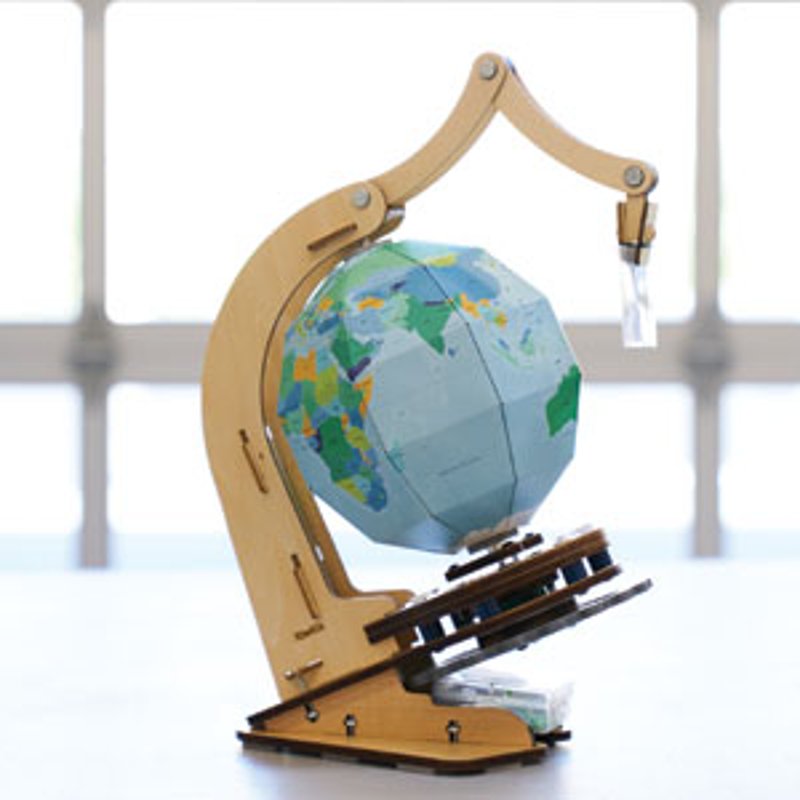Mechanical Globe
In this Eureka Crate, you'll explore the science, engineering, and history behind globes while building one of your own!

Explore:
- Latitude and Longitude
- Cartography
- Continents on the Move
Behind the design
Peek into the KiwiCo product design studio and the design process behind the Eureka Crate Mechanical Globe.
- If you’ve subscribed to KiwiCo’s Atlas Crate, this early map prototype may look familiar. That’s right, we used the Atlas Crate World Map as the base map for our globe! But there are some differences — in the two years since Atlas Crate was first released, two countries changed their official names (Macedonia to North Macedonia and Swaziland to Eswatini). We also added ten countries and territories from the United Nations list of Non-Self-Governing Territories. You can learn more about how they’re working towards decolonization and full independence at the UN’s site!
Our Changing Planet
- Most of the globe’s design came together pretty quickly (in fact, this early prototype looks almost the same as the finished globe). The magnifier arm, however, took some tinkering to get right. The straight wood bars of our initial design stuck out and clashed with the rest of the globe, so we spent several iterations revising them. While trying to figure out how to make the arm less noticeable, though, we eventually came up with the curved design that let it tuck away!
An Arm’s Length Away
- There’s a lot of complicated math that goes into making a round globe out of a flat map projection. Thankfully, we found Mike Wisniewski’s Globus Map Projector, an online program that can do all that math automatically. It made generating our globe from a flat map a breeze. If you’re interested in making your own globe, check it out!
Projection Program
